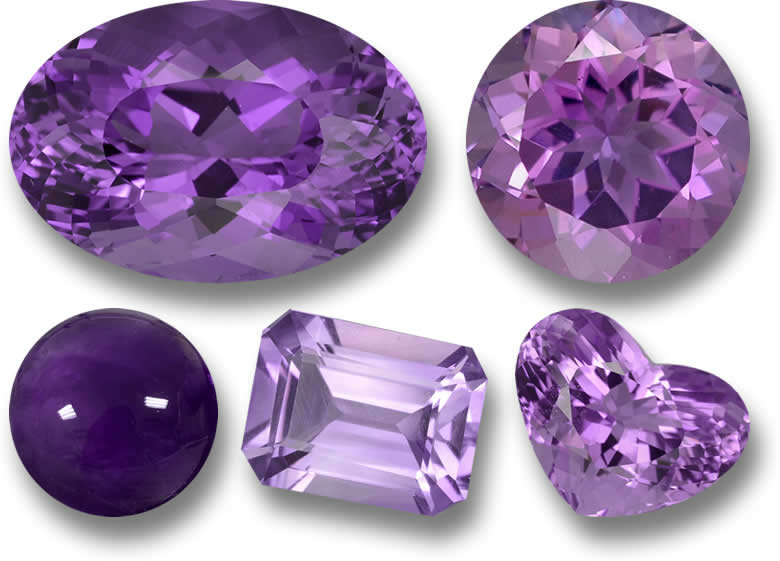February Birthstones
/Most people think of amethyst when they picture a beautiful purple gem. Courtesy Intimate Gems.
Amethyst was as expensive as ruby and emerald until the 19th Century, when Brazil’s large deposits were discovered. It was believed to prevent intoxication—amethystos means “not drunk” in ancient Greek. Today, as the most valued quartz variety, amethyst is in demand for designer pieces and mass-market jewelry alike, and its purple to pastel hues retain wide consumer appeal.
Description
Amethyst commonly shows zones of darker and lighter colors. Photo by Mike Havstad/GIA.
Amethyst is the purple variety of the quartz mineral species. It’s the gem that’s most commonly associated with the color purple, even though there are other purple gems such as sapphire and tanzanite. Its purple color can be cool and bluish, or a reddish purple that’s sometimes referred to as “raspberry.”
Amethyst’s purple color can range from a light lilac to a deep, intense royal purple, and from brownish to vivid. Amethyst also commonly shows what is called color zoning, which in the case of amethyst usually consists of angular zones of darker to lighter color.
Amethyst History and Lore
Because of its wine-like color, early Greek legends associated amethyst with Bacchus, the god of wine. Other legends reflected beliefs that amethyst kept its wearer clear-headed and quick-witted in battle and in business affairs. Because amethyst was associated with wine, it was believed that wearing amethyst prevented drunkeness.
Fine amethysts have been set in religious jewelry and royal crown jewels for ages. It was once considered equal in value to ruby, emerald, and sapphire. It’s no wonder that fine amethyst adorns the fingers of bishops as well as the coronation regalia of British royalty.
Amethyst is the birthstone for February and one of the emblems of the twelve apostles.
This ancient necklace dates to 2000BCE. An inscription on the center stone is a South Arabian script from the 8th century BCE. - From "Gems and Gemstones: Timeless Natural Beauty of the Mineral World" by Lance Grande and Allison Augustyn, 2009, University of Chicago Press.
FACTS
Mineral: Quartz
Chemistry: SiO2
Color: Purple
Refractive Index: 1.544 to 1.553
Birefringence: 0.009
Specific Gravity: 2.66
Mohs Hardness: 7




